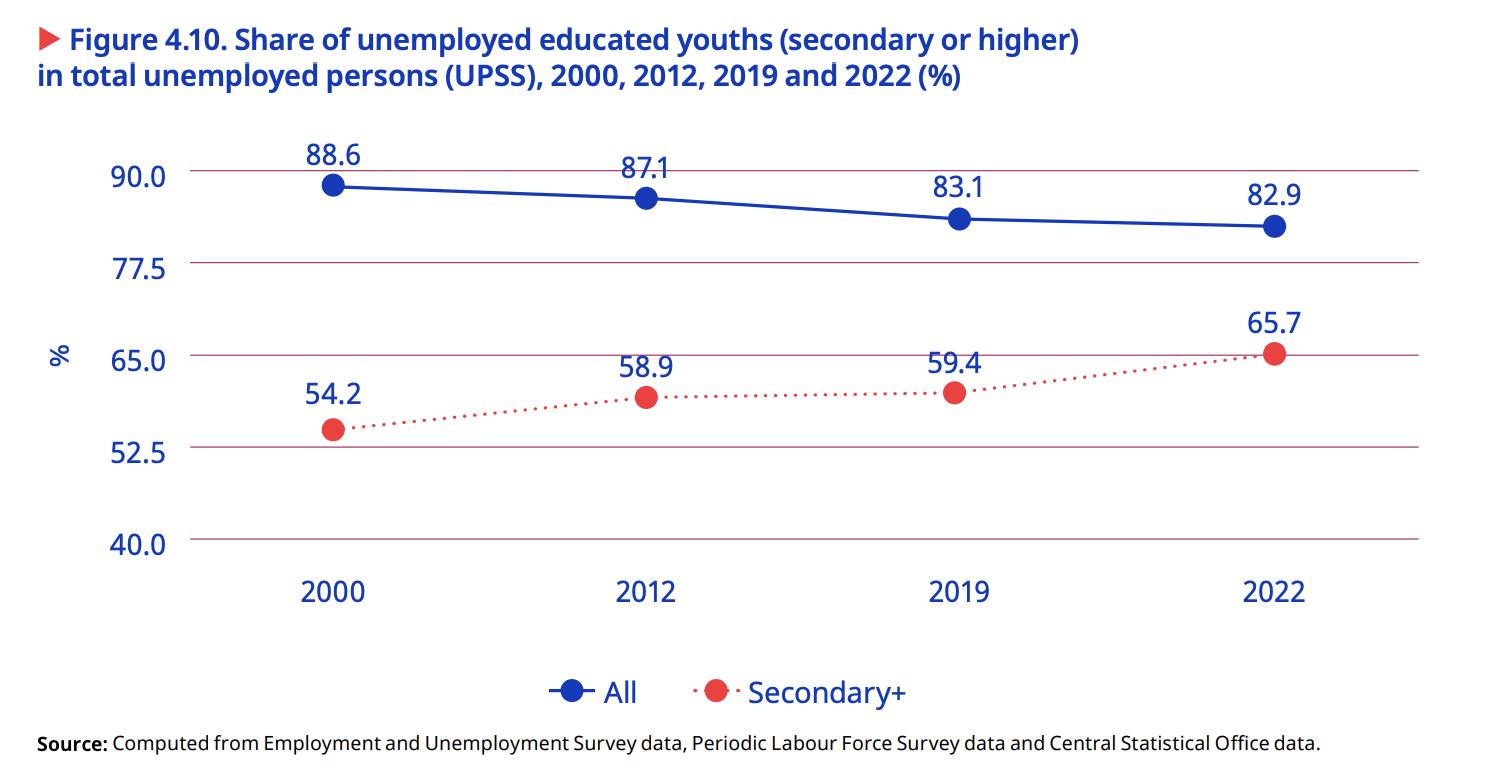
New report shows youth unemployment 'significantly higher' than adult unemployment

As more young people enter India's workforce, a new report has found that they are struggling to find work, even for those who finished with a higher level of education.
The report from the International Labour Organisation (ILO) found that youth unemployment in India was "significantly higher" than the adult unemployment rate there.
"In India, the youth unemployment rate (usual status) was an estimated 12.4% in 2022, which was more than 12 times higher than the adult rate," the report read.
Prior to 2022, India's youth unemployment rate has seen a nearly threefold increase from 5.7% in the 2000 to 17.5% in 2019.
The decline reported in 2022 was attributed to a considerable increase in the female workforce participation rate, which plunged unemployment rate for women at 11.8% when compared with men at 12.6%.
"This was a reversal from previous years, when the female unemployment rate was higher than the male unemployment rate," the report read.

Cases of youth unemployment was also greater in urban areas and among those who finished higher levels of education, according to the report.
In 2022, the unemployment rate among the youth in urban areas was 17.2%, higher than the 10.6% recorded in rural areas.
Young people who finished with a secondary level of education or higher also found it harder to find work, the report found.
The share of unemployed youths in the total unemployed population was 82.9%, according to the report, while the proportion of educated youths among all unemployed people was at 65.7%.
The share of unemployed educated youths in India was in an increasing trend, despite the share of unemployed youths declining, the report found.

"Education levels have improved considerably and is a key determinant of accessing better jobs," the report's foreword read. "At the same time, educated youth have higher rates of unemployment, reflecting a mismatch with their aspirations and available jobs."
According to the report, there are five key policy areas for further action in India, including:
"Given the importance of these issues, we believe the report will serve as a timely and constructive input for policymakers, social partners, civil society, and other researchers over the coming years," the report read.